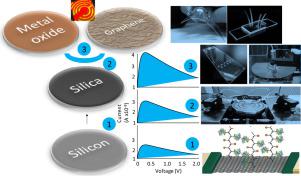Journal of the Taiwan Institute of Chemical Engineers ( IF 5.5 ) Pub Date : 2021-08-01 , DOI: 10.1016/j.jtice.2021.07.036 Subash C.B. Gopinath 1, 2, 3 , Santheraleka Ramanathan 1 , Mohd Najib Mohd Yasin 4 , Mohd Ibrahim Shapiai 5 , Zool Hilmi Ismail 5 , Sreeramanan Subramaniam 2, 3, 6

|
Background
Engineering nanoscale matter in a controlled functional system has expanded the area of science in the state-of-art of nanotechnology. The urgency in introducing real-time health monitoring sensors and rapid diagnostic tools in medical health is indeed high and crucial to date. The efforts are accompanied by nanotechnology to improve the sensors performances. In this line, semiconductor materials (Silicon/Silica) have been in well-focus to develop micro-/nano-sensors.
Methods
Further, additional layering such as metal oxide and graphene material have elevated the current scenario in biosensor developments. Among these, two-dimensional graphene nanomaterial owns its remarkable mechanical, electronic, electrochemical, and optical properties, has excited the medical field to develop graphene-based biosensors for human health diagnosis and monitoring. The oxygen rich graphene materials enhance the bio-functionalization of recognition bio-elements for excellent graphene-based biosensor development.
Significance
This review encloses the excellence of semiconductor materials in conjunction with biosensors for monitoring health and diagnosis. The advances and challenges encountered with developing semiconductors for nanobiosensors from laboratory set-up to the novel hand-held device for rapid and accurate human health care are outlined.
中文翻译:

微/纳米生物传感器中必不可少的半导体薄膜:当前情景
背景
在受控功能系统中工程纳米级物质扩展了纳米技术最先进的科学领域。迄今为止,在医疗健康领域引入实时健康监测传感器和快速诊断工具的紧迫性确实很高且至关重要。这些努力伴随着纳米技术来提高传感器的性能。在这方面,半导体材料(硅/二氧化硅)已成为开发微/纳米传感器的重点。
方法
此外,额外的分层,如金属氧化物和石墨烯材料,提升了生物传感器发展的当前情况。其中,二维石墨烯纳米材料以其卓越的机械、电子、电化学和光学特性,激发了医学领域开发基于石墨烯的生物传感器用于人类健康诊断和监测的兴趣。富氧石墨烯材料增强了识别生物元素的生物功能化,以实现出色的基于石墨烯的生物传感器的开发。
意义
这篇综述涵盖了半导体材料与生物传感器一起用于监测健康和诊断的卓越之处。概述了开发用于纳米生物传感器的半导体从实验室设置到用于快速准确人类保健的新型手持设备所遇到的进步和挑战。











































 京公网安备 11010802027423号
京公网安备 11010802027423号